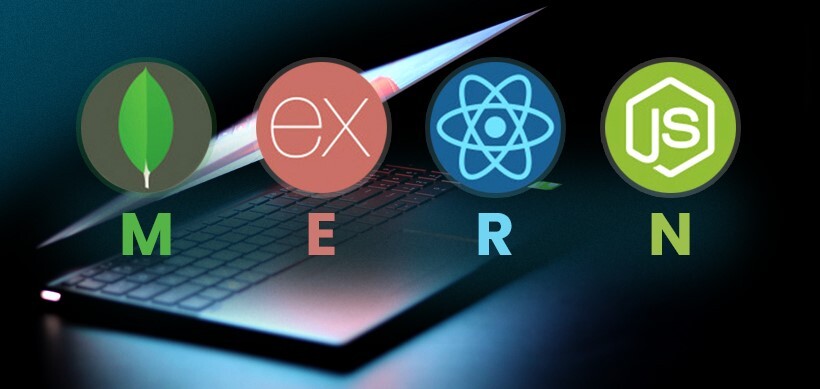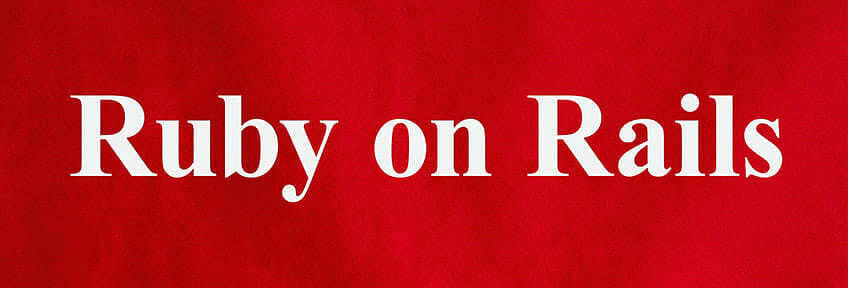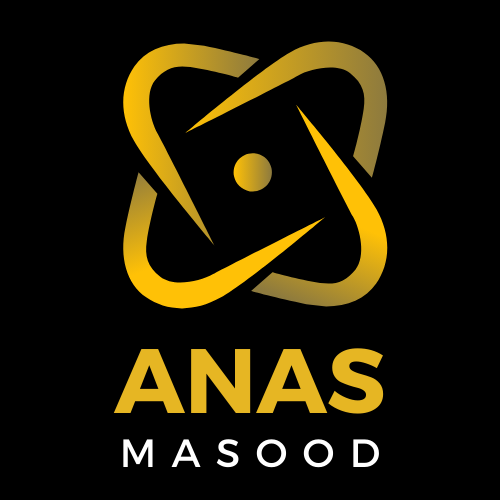Blog
MERN Stack Developer – Skills Required to Become a MERN Stack Developer

What is a MERN Full Stack Developer?
A web developer with expertise in implementing the MERN stack—MongoDB, Express.js, React, and Node.js—is known as a MERN stack developer. You should have a solid foundation in these technologies and a variety of other web development-related technical abilities if you want to succeed in this position.
Consulting with a leading MERN Stack developer is a good option for projects requiring a fast, agile development approach. Their proficiency with JavaScript technologies, such as Node.js and React, enables them to create an innovative, scalable online application.
7 Skills Required to Become a MERN Stack Developer
The following technical skills are necessary for a developer of the MERN stack:
1. MongoDB
MongoDB is a NoSQL database that uses documents with optional schemas that resemble JSON. Knowing how to store and manage data in MongoDB is crucial for MERN stack developers. These are the essential competencies:
- Designing databases: constructing schemas that take indexing and relationships into account while storing and retrieving data quickly.
- CRUD operations: Learn how to work with MongoDB collections by becoming proficient in the creation, reading, updating, and deletion of functionalities.
- Aggregation Framework: Use MongoDB’s robust aggregation framework efficiently for data transformation, analysis, and querying.
- Indexing: Putting indexes in place to enhance query efficiency.
- Replication and Sharding: Guaranteeing scalability and availability of data.
2. Express.js
With strong functionality for both web and mobile applications, Express.js is a simple and adaptable Node.js web application framework. Express.js is a component of the MERN stack and serves as the backend server framework. Important skills consist of:
- Middleware: The ability to process requests and answers using and creating middleware.
- Routing: Determining the application’s API endpoints and establishing and maintaining routes to accommodate client requests.
- Error Handling: Implement efficient error handling to keep an application stable and provide seamless user experiences.
- Security Practices: Using HTTPS, session management, input sanitization, and other recommended practices to make your application secure.
3. React.js
A JavaScript package called React.js is useful for creating interactive user interfaces, especially for single-page applications. React manages the frontend for the MERN stack. Essential skills consist of:
- Component-Based Architecture: Creating UI components that are reusable and maintainable to encourage a modular development methodology.
- State management: Managing and sharing state throughout the application using state management frameworks like Redux, context API, and hooks (useState, useEffect).
- Virtual DOM: Understanding its operation will help ensure a responsive user interface and maximize rendering performance.
- React Router: Using client-side routing to build an application on one page.
- Testing: Write unit and integration tests for React components using tools like Jest and React Testing Library.
4. Node.js
Node.js is a JavaScript runtime based on the V8 JavaScript engine in Chrome. It enables server-side JavaScript execution. Using Node.js as a MERN stack developer would be best for creating scalable network applications. Important abilities consist of:
- Asynchronous programming: Using callbacks, promises, and async/await to write non-blocking code that effectively manages I/O activities.
- NPM (Node Package Manager): Employing and creating packages and managing project dependencies with NPM.
- Server-Side Scripting: Creating scripts to manage processes, communicate via networks, and interface with server-side file systems.
- Microservices and API Development: Creating RESTful APIs and knowing how to create and oversee microservices.
- Event-Driven Architecture: Using Node.js’s event-driven architecture, asynchronous processes may be handled comfortably.
5. JavaScript
The foundation of the MERN stack is JavaScript, which powers Node.js server-side scripting, React.js frontend development, Express.js server-side scripting, and MongoDB queries. Essential skills consist of:
- ES6+ Features: Gaining proficiency with destructuring, template literals, async/await, spread/rest operators, and arrow functions—as well as other contemporary JavaScript features.
- DOM Manipulation: Developing dynamic and interactive web pages by manipulating the Document Object Model (DOM).
- Event Handling: Programming to effectively manage user interactions and other events.
- Prototyping and Inheritance: Learn how to design and extend objects in JavaScript and gain insight into prototypal inheritance.
- Functional Programming: Writing clear and manageable code is possible by using functional programming concepts.
6. HTML/CSS
HTML and CSS are important technologies for creating web pages. HTML delivers the structure, while CSS takes care of the presentation. Key skills include:
- Semantic HTML: Creating concise HTML code increases search engine optimization and accessibility.
- CSS Flexbox and Grid: Use modern CSS layout principles to create responsive and adaptable layouts.
- Preprocessors: To create stylesheets that are more effective and manageable, use CSS preprocessors like SASS or LESS.
- Responsive Design: Using responsive web design techniques to make sure apps function across a range of screens and devices is known as responsive design.
- CSS Frameworks: For faster development, become familiar with frameworks such as Bootstrap or Tailwind CSS.
7. RESTful APIs
RESTful APIs are an essential part of the MERN stack that facilitates communication between the client and the server. Key skills are:
- API Design: Designing RESTful APIs that are intuitive, well-documented, and easy to use, following best practices and standards.
- HTTP Methods: Understand and correctly use HTTP methods (GET, POST, PUT, DELETE) to perform operations on resources.
- Authentication and Authorization: Applying secure API endpoints using token-based authentication mechanisms like JWT (JSON Web Tokens).
- Versioning: Supervising multiple versions of an API to guarantee backward compatibility and smooth transitions.
- Testing and Documentation: Using technologies like Swagger, write thorough tests and document API endpoint documentation.
Final Note!
The key requirements to becoming a MERN stack developer are integrating several technologies and thoroughly understanding them smoothly. You can create reliable, scalable, and effective online applications by becoming proficient in JavaScript, HTML/CSS, React, Express, Node.js, and RESTful APIs. Moreover, you can succeed as a MERN stack developer by concentrating on these areas, regardless of where you are in your career or how you want to improve. Have fun with coding!
A Quick Overview Ruby on Rails – Hire ROR Developer
Are you aware of the Ruby on Rails framework, or are you completely new to its development and eager to learn more about its various concepts? If you are curious about what Ruby is, what Rails entails, what Ruby on Rails surrounds, and why and when it’s used, along with its features, advantages, limitations, and future, you’ve come to the right place.
Ruby on Rails, or RoR, is more than just a trendy issue in software development. It’s a framework that has become a staple in every web developer’s vocabulary. Its prominence in the web development community is evident from its ranking in the top 10 most popular frameworks in the United States. The growing popularity of Ruby on Rails is a testament to its power and versatility, making it a safe bet for your next software development project or your upcoming Ruby on Rails undertaking.
However, what is Ruby? And what is Rails? Do they both use the same framework or do they differ?
There is a lot of misunderstanding, isn’t there? But while we are here, there’s nothing to be afraid of.
This comprehensive guide will provide a complete overview of Ruby on Rails and address all your concerns.
What is Ruby?
It’s very important to know the basic concept of Ruby before going into the details about Rails or Ruby on Rails. In simple words, Ruby is a general-purpose, open-source programming language for building web applications, automating tasks, processing data, and much more. Its high portability and flexibility allow it to run on every operating system. According to Stack Overflow, Ruby’s increasing application has taken this amazing tool to a spot among the top 5 highest-paying programming languages.
Yukihiro Matz Matsumoto designed Ruby in the mid-1990s. Like C or Java, Ruby is a diverse language known for its numerous advantages in web development.
There’s a famous saying about ruby:
“Ruby is powerful, especially with its knight in shining armor, Rails.”
But why is that? The widespread recognition of Ruby’s benefits is largely responsible to Rails (Ruby on Rails). Simply put, Rails greatly increases Ruby’s importance in web development.
This brings us to an important question: What exactly are Rails, and why is it so important in web development?
What is Rails? Or Ruby on Rails

Rails is a software package that expands on the Ruby programming language. David Heinemeier Hansson developed it, and it is frequently referred to as just Rails. Based on Ruby, the Ruby on Rails framework is intended to increase web development productivity.
Ruby On Rails is an MVC Framework
The architectural pattern known as the model-view-controller, or MVC, is used to develop desktop and web applications.
Numerous other web frameworks use this framework, including CakePHP (PHP), Django (Python), and AngularJS (JavaScript). To organize the code, it divides the application’s logic into three interrelated sections.
The Model represents the application’s logic, data objects, and related high-level classes. While the View is the data’s visual representation (or, more accurately, the template files).
The final component that joins the other two is the Controller, which collects data from the Model to render in the View and reacts to user input.
In technical terms, a Ruby Gem package library can be deployed using the operating system’s command line interface. An effective, open-source web development framework called Ruby on Rails saves developers time by offering already-prepared solutions for basic tasks like building forms, menus, and tables for websites.
Rails combines the Ruby programming language with JavaScript, CSS, and HTML to create and run web applications on a web server. Since it functions on the server side, Ruby on Rails is sometimes called a backend web application development framework. It is among the most often used backend frameworks.
In the words of LearntoProgram Media creator Mark Lasoff:
All the tools needed to construct applications are provided by Ruby on Rails, or more precisely, by the Ruby programming language and the Rails framework. One advantage is that much of the labor-intensive work in developing a web application is handled for you. Ruby programmers are typically pleased with the language, syntax, and associated toolkit.
Are you looking for some of the greatest examples of Ruby on Rails? Here are a few well-known examples:
- GitHub
- SoundCloud
- Airbnb
- Hulu
- Etsy
- Shopify
- SlideShare
- CrunchBase
History of Ruby on Rails
Understanding Ruby on Rails’s historical background is important to grasping the core. Who then developed Ruby on Rails? Ruby on Rails was established in 2004 by David Heinemeier Hansson. To facilitate the construction of web applications using Ruby for other software developers, Hansson extracted Rails from the codebase of Basecamp, his company’s project management platform. In July 2004, Rails was launched to the general public.
Ruby on Rails’ growing developer adoption rate makes its appeal evident. It has received about 52,000 GitHub stars, the most impressive proof of its widespread use. The repository’s high star count and dynamic structure indicate its ongoing popularity and significance.
Key Features of Ruby on Rails Framework
Let’s examine some of Ruby on Rails’ most noteworthy attributes:
- Action Controllers
Action Controllers are classes that control the data transfer between the View and Model components. Their main responsibility is to receive client requests, process them, and provide pertinent answers. They are also in charge of carrying out the program’s logic, which includes duties like authentication and permission.
- Action Dispatch
Action dispatch is necessary to route requests to the appropriate Action Controller. Developers can effortlessly route URLs to the relevant sections of their application by using a routing table, which maps URLs to Controllers and Actions.
- The scaffolding
One element that helps developers rapidly create boilerplate code for their applications is scaffolding. It facilitates the creation of Models, Views, Controllers, and database migrations—all of which are essential components of a Ruby on Rails application. This allows developers to begin working on projects quickly without writing repetitious code, saving them much time and effort.
- Action Views
One of Ruby on Rails’ most important features is Action Views, which render the web application’s views. Action views can be created in several programming languages, including HTML, JavaScript, and Ruby, and they show data from the Model to the client.
- Active Record
The Active Record framework is an Object-Relational Mapping (ORM) library that streamlines database interactions. Developers can more easily manage database operations using Ruby classes rather than raw SQL. This frees developers from worrying as much about database management and more about the business logic of their applications.
Advantages of Rails on Ruby
The following are a few of the main benefits of the Ruby on Rails framework:
- Reusable & Scalable
Ruby on Rails code is modular, which facilitates scalability and reuse. Modules, called gems, are reusable parts that developers can design and quickly include in other applications. This saves time, and as the project develops, certainly, the code can be readily modified and expanded.
- Capabilities for Automated Testing
The Ruby community upholds High testing standards, and Rails has a built-in testing framework that makes it simple for developers to create and run automated tests. This guarantees the stability, dependability, and bug-free operation of applications.
- Wide-ranging Library Service
Ruby Gems are reusable code snippets created and shared by a vibrant and large community of Rails developers. When adding common features and functions to a Ruby on Rails application, developers can save time and effort by simply integrating these gems. Consider hiring a professional Ruby on Rails developer if you want a smooth and hassle-free web development process.
- Increased Performance
Because of its user-friendly design, Rails has a reduced learning curve compared to many other frameworks. As a result, developers can produce reliable and effective apps more quickly. Rails also simplifies the entire application development life cycle. Our engineers are experts at using the Ruby on Rails framework to create high-end web applications.
Disadvantages of Ruby on Rails
While we have discussed some of Ruby on Rails’s benefits, it’s time to discuss its drawbacks.
- Documentation Issues
It can be difficult to locate thorough documentation for Ruby on Rails, particularly for less well-known Ruby Gems and frameworks that extensively use mix-ins. This may make it challenging for developers to figure out how to use specific functionalities, which could cause delays in the development process.
- Performance at Runtime
One of Ruby on Rails’s main drawbacks is its runtime performance. Ruby’s runtime is slow compared to other technologies, such as Golang. This can be a major drawback, particularly for applications that need low latency and great performance.
The Future of Ruby on Rails
As the digital world keeps changing, people wonder what the future holds for Ruby on Rails. Despite having a huge influence on web development and being used by big businesses like Shopify, GitHub, and Basecamp, Ruby on Rails shows indications of becoming a legacy technology.
The decrease in the production of new gems is one sign of this possible change. Gems are the foundation of the Ruby on Rails ecosystem, and a decline in new gem creation indicates that developer enthusiasm may be diminishing. The emergence of more recent technologies and frameworks with unique features and capabilities can cause this trend.
This impression may stem from several factors, the most common of which are complaints that the RoR framework is outdated and lacks the capabilities developers need in today’s advanced, tech-driven world.
However, with the release of Ruby on Rails 5, which fixed many of these problems, things have drastically changed. The RoR development community ensured that fresh and modern features were included to make this release more exciting and futuristic. The Ruby on Rails framework is well-positioned to prosper and change with the ever-changing IT environment. Despite these difficulties, Ruby on Rails’ vibrant community plays a big role in the platform’s continued growth. The dynamic and helpful Ruby on Rails community provides developers with tools, forums, and meetups to facilitate knowledge sharing and project collaboration. This spirit of cooperation and group education encourages development and creativity in the community.
Ruby on Rails is and will be one of the most inventive and dynamic frameworks available to developers in the future. As technology develops, developers are increasingly looking at alternatives, highlighting capabilities like automation, blockchain, and machine learning.
Furthermore, there are hundreds of job vacancies for Ruby on Rails engineers right now on sites like LinkedIn, indicating the continued strength of the business. As businesses in various sectors come to understand the framework’s benefits, there is a constant need for qualified Ruby on Rails developers. For individuals with experience in Ruby on Rails, plenty of career prospects and competitive compensation reflect this need.
Final Remarks!
Although there are disagreements on Ruby on Rails’ place in the dynamic world of web development, it is still a strong and useful option. Big firms like Shopify, GitHub, and Basecamp, which are still using it, provide strong evidence of its effectiveness. The vibrant developer community guarantees flexibility and regular updates, such as Rails 7, whose main purpose is speed and contemporary online capabilities.
In the future, scalability issues will probably need to be resolved for Ruby on Rails to remain competitive in some industries. However, its emphasis on developer productivity and a strong community set it up for long-term success. Ruby on Rails will continue to be an important tool in developers’ toolboxes as long as there is a demand for rapid, effective web development.
Hello world!
Welcome to WordPress. This is your first post. Edit or delete it, then start writing!
Follow your own design process.
My job is simple and sophisticated, so it is possible to describe and simple, and flowery language. I love the feel and sophistication of its superiority. I like people with a keen mind and at the same time easy to talk to. These qualities can be combined perfectly natural. However, things like people look miserable, if these properties are connected to them artificially.
Modern design and a lack of love dilettantism. Looking for such designers, which all use a little beauty and no matter how much they looked around either; which you always want to do something else. Designers do not only image-makers, but also dreamers who tell stories and think. For me, all the things a good story is more important than its form.
The designer must be an interpreter, and real and virtual needs must anticipate those questions of people that they do not think, and suddenly opened in the already created objects.
For me, the design — it is the quality of life. Good design has little to do with trends. Tired of listening to how he try to give the status of a frivolous fashion phenomenon. In my opinion, the designer should strive to do more than separate things.
— Antonio Citterio
Minimalism has reached a certain critical point, the top. Where to go? I do not know. The main thing for the designer — to create things that are pleasing to him, the work brings satisfaction, and cooperation with the customer — satisfaction. We need to understand what the customer wants, and to connect it with your wishes and possibilities. To create something outstanding, we need the enthusiasm of both. I am a very happy person, because I worked with wonderful customers who have helped me very.
- Design — is not how the object looks, but how it works.
- Good design — is innovative.
- A good design — is as little design as possible.
- Good design — aesthetic.
Think about the content that you want to invest in a created object, and only then will form. The thing is your spirit. A spirit unlike forms hard copy.
Table of Contents
ToggleSimple gallery
I want to create beautiful things, even if it’s not necessary for anyone, as a fight against ugly things. This is my intention.


Fast, cheap and good — from these three things you should always choose two. If it’s fast and cheap, it will never be good. If it’s cheap and good, it will never work out quickly. And if it is good and fast, it will never come cheap. But remember: of the three you still have to always choose two.
Why You Should Take Care About Your Branding.
My job is simple and sophisticated, so it is possible to describe and simple, and flowery language. I love the feel and sophistication of its superiority. I like people with a keen mind and at the same time easy to talk to. These qualities can be combined perfectly natural. However, things like people look miserable, if these properties are connected to them artificially.
Table of Contents
ToggleENTERTAINMENT
Above all, think of life as a prototype. We can conduct experiments, make discoveries, and change our perspectives. We can look for opportunities to turn processes into projects that have tangible outcomes. We can learn how to take joy in the things we create whether they take the form of a fleeting experience or an heirloom that will last for generations. We can learn that reward comes in creation and re-creation, no just in the consumption of the world around us. Active participation in the process of creation is our right and our privilege. We can learn to measure the success of our ideas not by our bank accounts by their impact on the world.
GAMES
It is not enough that we build products that function, that are understandable and usable, we also need to build products that bring joy and excitement, pleasure and fun, and, yes, beauty to people’s lives. Creativity is to discover a question that has never been asked. If one brings up an idiosyncratic question, the answer he gives will necessarily be unique as well.
The goal of a designer is to listen, observe, understand, sympathize, empathize, synthesize, and glean insights that enable him or her to make the invisible visible.
PLAY THE OCULES
Andrew Grove
There’s the whole Buddhist thing about the essence of a bowl being its emptiness—that’s why it’s useful. Its emptiness allows it to hold something. I guess that means that design must talk about something else. If you make design about design, you’re just stacking bowls, and that’s not what bowls are for.
- Design — is not how the object looks, but how it works.
- Good design — is innovative.
- A good design — is as little design as possible.
- Good design — aesthetic.
A designer is an emerging synthesis of artist, inventor, mechanic, objective economist, and evolutionary strategist.
The main thing for the designer – to create things.
Modern design and a lack of love dilettantism. Looking for such designers, which all use a little beauty and no matter how much they looked around either; which you always want to do something else. Designers do not only image-makers, but also dreamers who tell stories and think. For me, all the things a good story is more important than its form.
The designer must be an interpreter, and real and virtual needs must anticipate those questions of people that they do not think, and suddenly opened in the already created objects.
For me, the design — it is the quality of life. Good design has little to do with trends. Tired of listening to how he try to give the status of a frivolous fashion phenomenon. In my opinion, the designer should strive to do more than separate things.
— Antonio Citterio
Minimalism has reached a certain critical point, the top. Where to go? I do not know. The main thing for the designer — to create things that are pleasing to him, the work brings satisfaction, and cooperation with the customer — satisfaction. We need to understand what the customer wants, and to connect it with your wishes and possibilities. To create something outstanding, we need the enthusiasm of both. I am a very happy person, because I worked with wonderful customers who have helped me very.
- Design — is not how the object looks, but how it works.
- Good design — is innovative.
- A good design — is as little design as possible.
- Good design — aesthetic.
Think about the content that you want to invest in a created object, and only then will form. The thing is your spirit. A spirit unlike forms hard copy.
Table of Contents
ToggleSimple gallery
I want to create beautiful things, even if it’s not necessary for anyone, as a fight against ugly things. This is my intention.
Fast, cheap and good — from these three things you should always choose two. If it’s fast and cheap, it will never be good. If it’s cheap and good, it will never work out quickly. And if it is good and fast, it will never come cheap. But remember: of the three you still have to always choose two.


